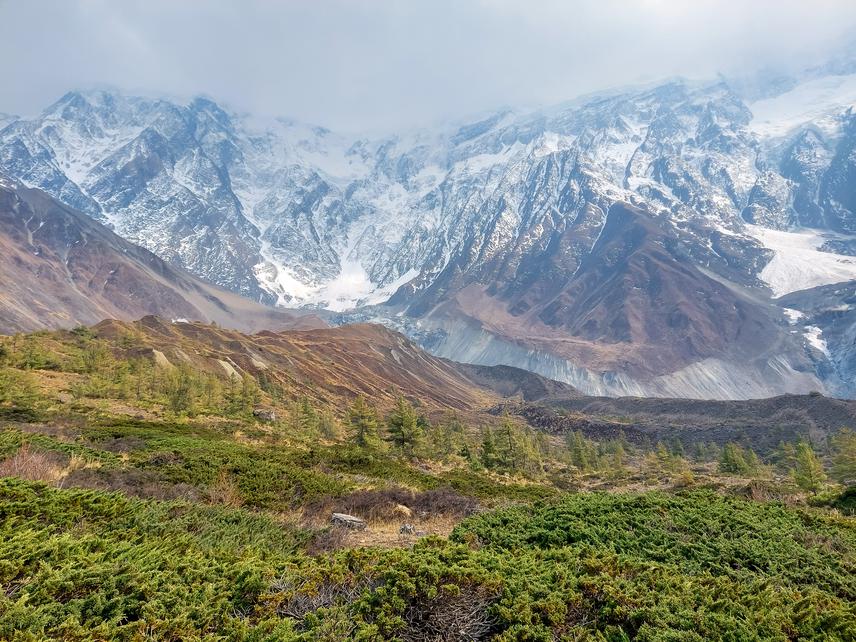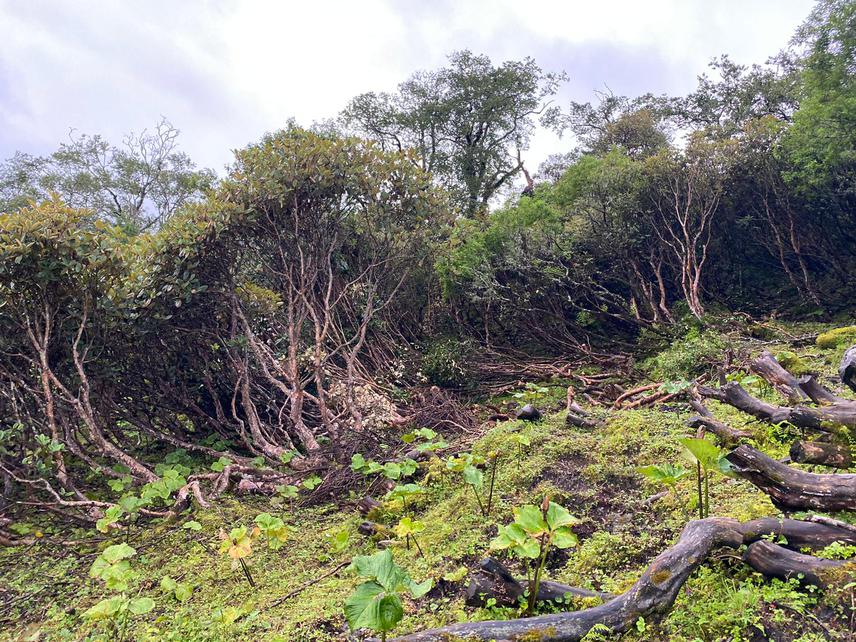Kishor Prasad Bhatta
Mountain forests, which are ecologically very important, are under serious threat from anthropogenic activities. It is the home of many endangered tree species and on the other hand, it forms indispensable life support to the local communities. The studies on endangered tree line species, their management, and human use are still unexplored in high mountains.

Tree line ecotone in Mustang dominated by Pinus wallichiana and Juniperus squamata. Mt. Nilgiri (7091m) in the background. ©Bimal Kumar Yadav.
Firstly, this study aims to provide a deeper understanding of mountain forest ecology by focusing on the composition of sub-alpine and alpine vegetation types near the tree line. The detailed monitoring of tree line species and comprehension of anthropogenic influences on mountain forest resources will allow an in-depth assessment of various factors shaping endangered mountain forest species and human disturbances on these resources. It will help to bridge the gap between ecological studies and the socio-economic aspect of human dependence on mountain forests which is very vital for sustainable resource management in the complex topography. Similarly, this study aims to provide valuable insights into the current conservation efforts by local communities, forming a strong foundation for more applicable livelihood strategies for sustainable conservation. In a nutshell, by investigating endangered tree line species and human impacts, as well as incorporating community perspectives, this research aims to suggest effective biodiversity conservation strategies in the Himalayas. This level of intervention may not only benefit the study site but also serve as a benchmark for other mountainous countries having similar challenges. This broader applicability enhances the significance of this research, forging a path toward shared environmental stewardship.

Tree line vegetation dominated by Rhododendron campanulatum in the Bhujung area of the Annapurna region. ©Kishor Prasad Bhatta.